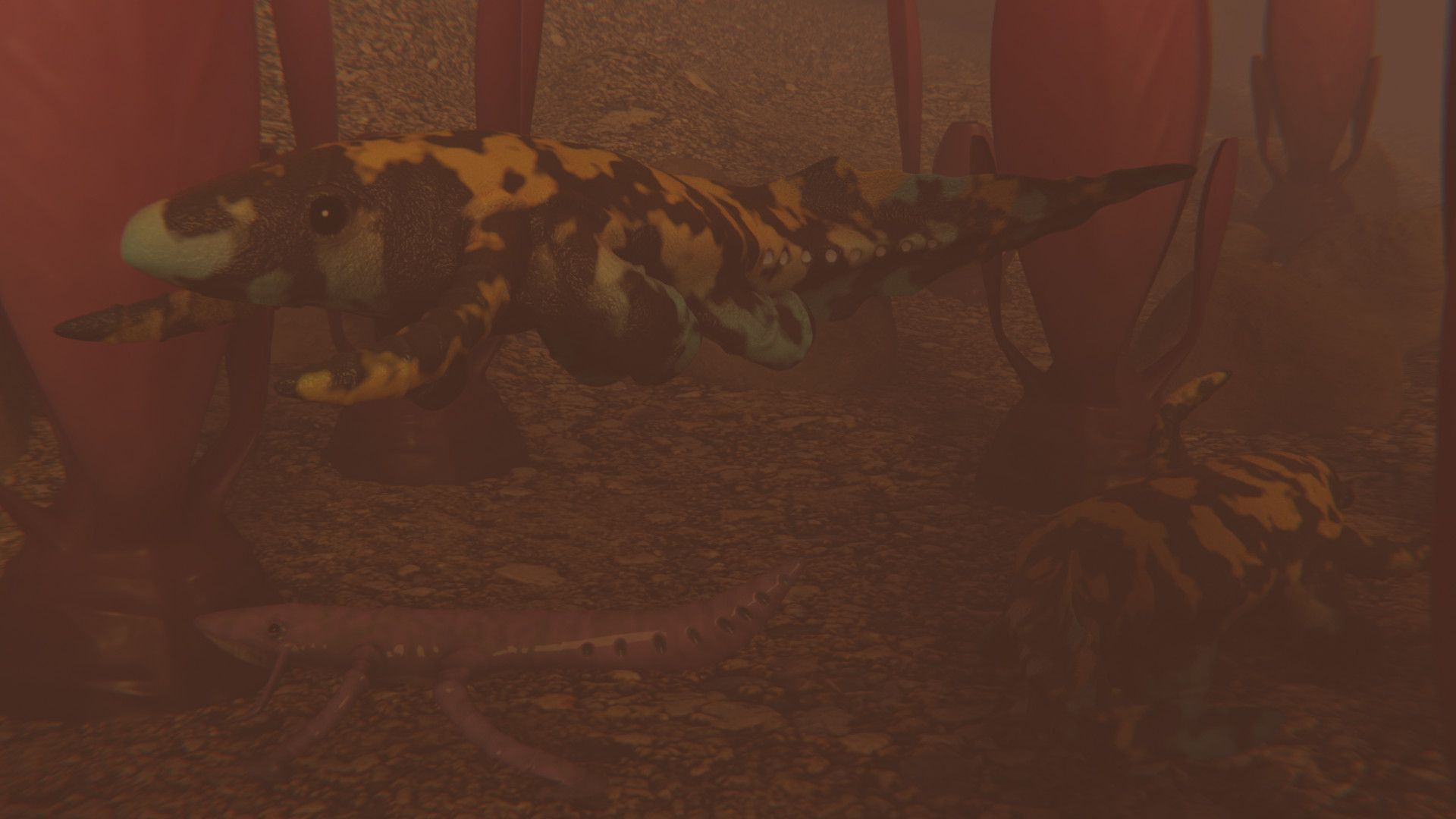Lutolacerta
In the freshwater systems of Yama, Lutolacerta fills the niche of a medium sized omnivore. It is the largest member of a group of bobird descendants who have developed a cartilaginous skeleton to support their internalized gills referred to colloquially as the gillcords.
Lutolacerta is primarily a bottom dweller using its large chemoreceptors to guide it through the murky water for food. It will scavenge primary but is capable of active hunting due to its powerful tail.
Pictured here a pair of Lutolacerta forage around the edge of a Yaman lake. [Creature design by Saurusblooded and Doctor Misa]
Basic Information
Anatomy
Like all gillcords, Lutolacerta has an internal cartilaginous skeleton to support an internal gill system. This protects the gills from parasites or being damaged. The tail has 8 pairs of round spiracles positioned laterally that allow for water to enter the gills.
The tail also possesses a flattened membrane that is used for propulsion when the Lutoacerta is actively swimming. Though it usually spends time walking on four padded feet made for digging in muddy substrate. They are rather short and possess two toes each. The body is more domed and aerodynamic to allow for a much more active lifestyle.
Lutolacerta is jawless like its ancestor but possesses a sharpened radula for masticating food. Its eyes are larger than its ancestor’s. The chemoreceptors on the lateral sides of its head have also become larger as well as wider at the tip.
Genetics and Reproduction
Lutolacerta are hermaphrodites who breed twice a year. When a receptive mate is located, they will begin digging a pair of burrows in muddy sides of a lake or pond. They will then both lay eggs, one in each burrow, and fertilize them before sealing the burrows. The pair will then defecate around the burrows as a way to mask the scent of the eggs.
Growth Rate & Stages
After a period of 30 local days the Lutolacerta eggs will hatch and emerge from the burrow in a larval form. The larval form resembles the ancestral bobird except for the gills being internalized. They will live on the lake or pond bottom as detritivores over a period of 1 local year until they reach a height of 4 cm. At this point their bodies will begin forming their adult features, the radula, enlarged chemoreceptors and coloration. This process will take about 60 local days after which they will be fertile adults.
Ecology and Habitats
Lutolacerta is native to the freshwater rivers, lakes, swamps and ponds of Yama though it can only breed slow moving water with a muddy bottom.
Dietary Needs and Habits
Lutolacertas are omnivores who feed on retinalphytes, juveniles of other species, carcasses and eggs.
Additional Information
Perception and Sensory Capabilities
Lutolacerta’s eyes have improved to be more sensitive to movement but its chemoreceptors have become far more sensitive and able to detect buried food sources, like the eggs of the many freshwater fauna local to Yama.











Comments